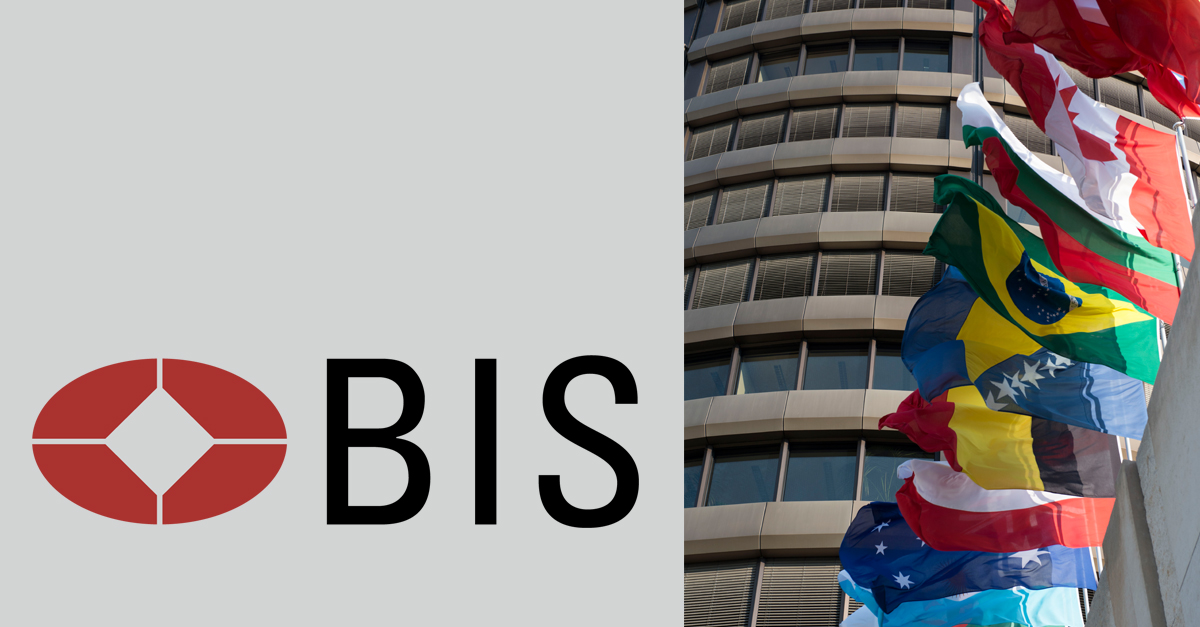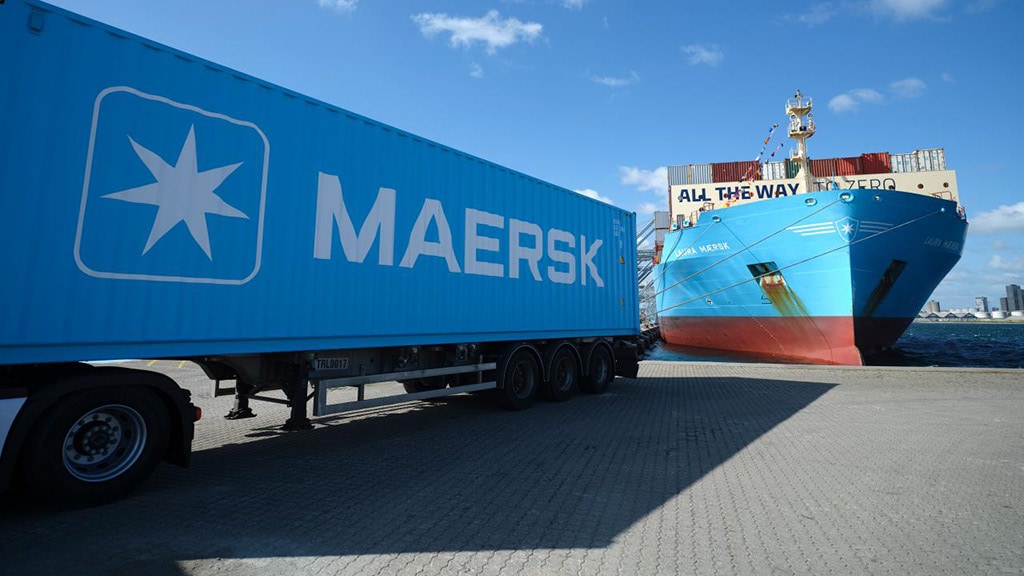Oppo has officially confirmed that its much-anticipated Find X9 series will debut in India later this month. The brand first announced Find X9 and Find X9 Pro in its home market of China last month, so we’re finally…
Author: admin
-

RWC 2027 Final Qualification Tournament Match Day One Preview
One place remaining – four nations left. From 8-18 November at The Sevens Stadium in Dubai Belgium, Brazil, Namibia and Samoa will battle it out to become the final nation to join Australia 2027.
Over three match days, 8,…
Continue Reading
-

Global standard-setting bodies publish an assessment report and a consultative report to set out guidance on general business risks and general business losses
- The BIS Committee on Payments and Market Infrastructures (CPMI) and the International Organization of Securities Commissions (IOSCO) today published an implementation monitoring report on general business risks and a consultative report on financial market infrastructures’ (FMIs) management of general business risks and general business losses.
- The assessment report identifies a number of serious issues of concern relating to FMIs’ management of general business risks and the liquid net assets funded by equity they hold to cover potential losses.
- The consultative report sets out guidance for public consultation that addresses these findings and provides supplemental guidance to the CPMI-IOSCO Principles for financial market infrastructures (PFMI).
The CPMI and IOSCO today published two reports on the subject of management of general business risks and general business losses by FMIs.
The Level 3 assessment report reviews the implementation the PFMI Principle 15 on general business risk at a sample of 34 FMIs and identifies a number of serious issues of concern. These relate to areas which include determining the amounts of liquid net assets funded by equity to cover potential losses from different sources of risks, recovery and orderly wind-down planning, and plans for raising additional equity.
The consultative report sets out proposed guidance for FMIs and relevant authorities relating to FMIs’ management of general business risks and general business losses, including in the context of recovery and orderly wind-down. This proposed guidance, which supplements the PFMI, takes into account the findings of the assessment report.
Comments on the consultative report should be submitted by 6 February 2026 via email to both the CPMI Secretariat (cpmi@bis.org) and the IOSCO Secretariat (GBR-CP@iosco.org). Comments will be published on the websites of the BIS and IOSCO unless otherwise requested. Commercial or other sensitive information should not be included in the submissions, or may be included, with redactions for publication clearly noted.
Continue Reading
-

FMIs’ management of general business risks and general business losses: further guidance to the PFMI
The Bank for International Settlements’ Committee on Payments and Market Infrastructures (CPMI) and the International Organization of Securities Commissions (IOSCO) published for public comment a consultative report on financial market infrastructures’ (FMIs) management of general business risks and general business losses.
FMIs, which include payment systems, securities settlement systems, central securities depositories, central counterparties and trade repositories, play an essential role in the global financial system.
The consultative report sets out proposed supplemental guidance for FMIs and relevant authorities on certain principles and key considerations relating to FMIs’ management of general business risks and general business losses, including in the context of recovery and orderly wind-down.
In doing so, the guidance does not aim at introducing new standards but rather at elaborating on the principles which are already established in the Principles for financial market infrastructures (PFMI). The guidance also takes into account findings from the CPMI-IOSCO Level 3 assessment report on general business risks and prior CPMI-IOSCO work on CCP practices to address non-default losses.
General business losses are losses that are neither related to participant default nor separately covered by financial resources under the credit and liquidity risk principles. General business losses may arise from business risks related to the operation of an FMI as a business enterprise.
They may also arise from risks faced by the FMI related to other principles under the PFMI, for example legal risk (Principle 1), custody and investment risks (Principle 16) and operational risk (Principle 17). General business losses may be one-time or recurring losses.
In addition to clarifying the scope of general business risk and the interaction across different Principles, the report provides guidance on: (i) identifying, monitoring and managing general business risks; (ii) determining the minimum amount of liquid net assets funded by equity and (iii) governance and transparency.
Comments on the report should be submitted by 6 February 2026 via email to both the CPMI Secretariat (cpmi@bis.org) and the IOSCO Secretariat (GBR-CP@iosco.org). Comments will be published on the websites of the BIS and IOSCO unless otherwise requested. Commercial or other sensitive information should not be included in the submissions, or may be included, with redactions for publication clearly noted.
Continue Reading
-
Access Denied
Access Denied
You don’t have permission to access “http://www.afreximbank.com/afreximbank-extends-36-4-million-contract-financing-facility-to-egypts-samco-for-stadium-project-in-uganda/” on this server.
Reference…
Continue Reading
-

Maersk IMEA Market Update – November 2025
Executive summary
Trade flows across India, the Middle East, and Africa continue to show resilience amid a complex policy landscape and shifting global demand. The final quarter of 2025 is marked by stabilized ocean reliability, major customs reforms, and a renewed focus on sustainable inland logistics.
India’s accelerated trade negotiations with the EU and the operationalisation of the India–EFTA pact signal stronger export potential for manufacturing and consumer goods sectors.
In Africa, seasonal flows in grapes and cocoa are well supported by robust pricing, reliable equipment positioning, and improved traceability. Meanwhile, Gulf economies continue to digitize trade and customs operations, reinforcing their positions as global logistics hubs.
Across the region, regulatory clarity and infrastructure investment are setting the tone for a more predictable and transparent trade environment heading into 2026.
Ocean update
South Africa – Grape Season Outlook
South Africa’s grape export season is on track to begin in mid-Q4, with healthy crop yields and firm demand from European importers ahead of the festive period. Terminal operations in Cape Town remain steady, though occasional berthing delays due to weather may occur.
Equipment repositioning continues to progress well, and Gemini network performance has stabilized sailing schedules. With proactive planning and steady container availability, a smooth start to the season is anticipated, reinforcing customer confidence and market reliability.
West Africa – Cocoa Sector Strengthens
West Africa’s cocoa sector is entering a period of renewed optimism. Record farmgate prices — Côte d’Ivoire at 2,800 CFA fr/kg (+27%) and Ghana at GH₵ 58,000/MT (+12%), are strengthening farmer participation and formal trade channels. Cameroon and Nigeria are following similar trajectories, underpinned by demand for high-quality beans and growing domestic processing.
Despite a global price correction to around USD 5,956/MT, demand remains strong — especially in Europe’s premium chocolate segment and Asia’s fast-growing confectionery markets. The sector’s pivot toward traceability, digital certification, and sustainable farming continues to align with evolving global procurement standards.
For logistics, higher farmer engagement and clearer export visibility are improving nomination predictability and supply chain planning across West African corridors.
Customs update
Saudi Arabia – SABER 2.0 and Advance Import Declarations
Saudi Arabia has made the SABER Shipment Certificate mandatory prior to customs declaration (effective October 1, 2025). The enhanced SABER 2.0 system leverages blockchain verification and expands compliance requirements for high-risk goods. Additionally, from October 29, importers must submit manifests and declarations in advance for all seaport shipments — a move aligned with Vision 2030’s ‘Clearance within 2 Hours’ initiative.
Importers are encouraged to integrate both workflows early to ensure timely processing and compliance with new clearance procedures.
Oman – New Special Economic Zone in Rawdah
Oman launched the Rawdah Special Economic Zone (SEZ) in October 2025, granting duty exemptions, deferred payments, and access to bonded warehousing. The SEZ is expected to boost cross-border re-exports between the UAE and Saudi Arabia and attract manufacturing investment in construction materials and consumer goods.
Qatar – Digitized Customs and Authorized Forwarders
Qatar introduced an AI-enabled ‘Customs Documents’ system in October 2025, automating the archiving of customs agreements and memoranda. Simultaneously, the Ministry of Transport mandated that all import and export shipments be handled by authorized freight forwarders, excluding direct Beneficial Cargo Owner (BCO) shipments.
These reforms aim to enhance compliance, traceability, and trade facilitation efficiency.
India – Trade Facilitation and FTA Progress
Negotiations on the India–EU Free Trade Agreement accelerated this month, targeting completion by December 2025. The India–EFTA Pact became operational in October, unlocking USD 100 billion in investment commitments. Additionally, the Central Board of Indirect Taxes and Customs (CBIC) consolidated 31 notifications into one unified directive to streamline compliance.
Importers and exporters should review rules of origin and tariff updates to capture new market access opportunities.
Bangladesh – Tariff Reform and LDC Transition Preparedness
Bangladesh’s FY26 budget introduces a wide-ranging tariff reform as the country prepares for graduation from Least Developed Country (LDC) status in 2026. The proposal includes cutting import duties on 110 products, reducing duties on 65, and eliminating supplementary duties on nine items, while adding a new 40% duty slab for luxury goods.
To enhance export competitiveness, the government is expanding Central and Free Zone Bonded Warehouses, enabling faster raw material imports for export industries. The reform also eliminates the tariff valuation system and minimum import values on 84 products, while a new risk-based Import Policy Order aims to reduce clearance time from 270 hours to under 100.
Impact on businesses:
- Exporters can expect lower input costs for pharmaceuticals and agro-machinery, and faster turnaround under simplified clearance.
- Importers benefit from reduced tariffs on essentials and raw materials, though luxury goods face higher supplementary duties.
- The transition reforms are designed to help Bangladesh maintain cost competitiveness and supply chain efficiency post-LDC graduation.
Sri Lanka – Trade Facilitation and Digitization Momentum
Sri Lanka has approved its Trade Facilitation Action Plan 2025–2028, focusing on digitization of customs procedures and full compliance with the WTO Trade Facilitation Agreement. The plan is designed to reduce clearance delays and improve transparency.
Customs revenue has already reached 90% of the annual target by October 2025, aided by stronger enforcement and digital tools. The new Tariff Guide 2025 updates HS codes and statutory requirements for imports, effective January 2026.
Pakistan – National Tariff Policy 2025–30 and Industrial Growth Agenda
Pakistan has launched its National Tariff Policy 2025–30, targeting a reduction in average tariffs from 20.19% to below 10% by 2030. The policy simplifies customs duty slabs to 0%, 5%, 10%, and 15%, and phases out Regulatory Duties (RDs) and Additional Customs Duties (ACDs) over the next five years.
Complementary reforms under the Finance Bill 2025 expand the zero-duty slab to 916 tariff lines, abolish RDs on 554 codes, and lower ACDs across most slabs. Automotive tariffs are set to decline from mid-2026, while exemptions under the Fifth Schedule will be rationalized to reduce fragmentation.
Impact on businesses:
- Importers benefit from lower input costs for industrial materials, improving production margins and pricing flexibility.
- Exporters gain a competitive edge in regional trade through cheaper inputs and streamlined customs processes.
- The policy underpins Pakistan’s export-led recovery strategy, improving cost structures for manufacturing, textiles, and industrial value chains.
Global Trade Watch – External Developments Shaping IMEA Supply Chains
The United States has entered multiple bilateral trade frameworks across Asia, including Malaysia, Cambodia, Thailand, and Vietnam, reinforcing supply chain diversification.
New critical minerals and rare earth agreements with Japan further anchor regional resilience and secure long-term industrial collaboration.
Inland Update
Rail Freight Expansion Across Northern India
As part of its integrated logistics push, India is witnessing strong uptake in rail-based freight, especially on north–west and north–east corridors. The recently expanded Maersk Intercontinental Rail network now connects Ludhiana, Dadri, and Ahmedabad to ports such as Mundra and Pipavav, offering temperature-controlled and dry-cargo services to Europe, CIS countries, and the Middle East.
This rail solution provides a lower-emission, cost-efficient alternative to road transport, reducing transit times by up to 30% and CO₂ emissions by over 60%. Seamless multimodal integration, combining ocean, rail, and last-mile road delivery, continues to enhance India’s export competitiveness for automotive, FMCG, and textile industries.
With growing policy focus on decarbonization and “Make in India” export infrastructure, inland rail logistics is emerging as a critical pillar of India’s sustainable trade growth.
Useful links
More News and Insights from Maersk
Visit our Insights Hub where we share the latest trends in supply chain digitization, sustainability, growth, resilience, and integrated logistics.
Useful links
Check Maersk market updates from across other regions by clicking here.
Continue Reading
-

Physical Activity and Psychological Wellbeing in Vitiligo Study
VITILIGO is a long-term skin condition characterised by the progressive loss of melanocytes, leading to patchy depigmentation. Although it does not cause physical pain or shorten life expectancy, its visible nature can have a profound impact…
Continue Reading
-

Explosion at mosque in Indonesia’s Jakarta injures more than 50, police say | News
Injured are taken to hospital after an explosion occurred during Friday prayers at a mosque inside a school complex in the capital.
Published On 7 Nov 2025
Dozens of people have been rushed to…
Continue Reading
-

Elena Rybakina Creates History by Reaching WTA Finals Semifinal | Tennis
Elena Rybakina reached the semifinals of the WTA Finals in Riyadh, Saudi Arabia on November 5, 2025.

Elena Rybakina continues to blaze new trails for Kazakhstan, etching her name into tennis history with a milestone that transcends sport. On…
Continue Reading

